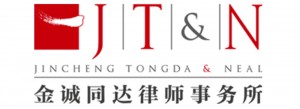In provision of trademark services, the author has noted that some foreign clients are reluctant to file their trademark registration in China, and neither do they defend rights assertively on infringements. Worse still, some clients tend to avoid lawsuits in the event of serious infringement, and are reluctant to resolve the disputes. The reasons are of course embedded in considerations relating to business strategy, but the underlying reason signifies a lack of confidence in the Chinese trademarks regulatory regime – the misconception that even if a case has been filed, one can hardly achieve the desired outcomes.

FRANK LIU
金诚同达律师事务所合伙人
Partner
Jincheng Tongda & Neal
With the misconception, some foreign companies are reluctant to adopt a systematic approach to trademark protection system in China. Some even avoid the Chinese market. The reality, however, is not consistent with what they think. In recent years, China has made remarkable progress in areas such as trademark legislation, administrative and judicial protection.
DATA REVIEW
First, let us examine the situation of China’s trademark protection on the basis of a set of data. Since the statistical data for 2017 have yet to be released, the author could only refer at the time primarily to the relevant data in 2016.
Trademark application. Registration of trademarks forms part of the foundation work for corporate development and brand building. In 2016, trademark applications in China had reached 3.691 million, a year-on-year increase of 28.35%, ranking first in the world for the 15th consecutive year. The number of foreign applications has reached 135,900 out of the total applications.
Administrative enforcement of trademark cases. In China, the investigation and administrative enforcement by the State Administration for Industry and Commerce (SAIC) plays an important role in protection of trademark rights. According to statistics, the SAIC handled in 2016 a total of 32,000 trademark cases involving infringements worth more than RMB450 million, including a number of alleged infringements against international brands, such as Nike and New Balance. At the same time, special actions were also taken against infringements of trademarks of Disney and Apple.
Civil action on trademark cases. In 2016, among the foreign-related trademark civil actions, the percentage of foreign parties winning the cases accounted for 94.1%, and the average amount of the award was RMB208,141, which was approximately 4.5 times the average judgment amount in all cases (RMB46,374). In foreign-related cases in which the foreign parties were the defendants, the other parties’ withdrawal rate reached 75%.
BETTER PROTECTION
The recent judicial development has substantially demonstrated that China is gradually strengthening the legal protection of trademarks in the country. The author will briefly introduce the trend of development from two aspects below:
More emphasis has been placed on regulating “piracy or bad-faith” trademark registration. The regulation of “piracy or bad-faith” trademark registration has been strengthened, as reflected in the provisions of the newly revised Trademark Law in 2013. The new provisions clearly stipulate the principle of honesty and good faith, focused on regulating subjects affiliated with the rights claimants and engaged in pirating third parties’ prior existing rights and well-known marks. Following this, the punitive damages imposed on bad-faith trademark infringers have been increased.
Judicial practice also fully reflects the above legislative changes. For example, in the case of a bad-faith trademark squatter who makes pre-emptive registration of a trademark already in use and then sues the other party for infringements, in the Supreme People’s Court’s guiding precedents and other precedents, the court judged whether the registration of the trademark in question was bad-faith or not, and if so, the infringement claims filed by the plaintiff may not be sustained.

ADAM ZHU
金诚同达律师事务所律师
Associate
Jincheng Tongda & Neal
What is even more striking is that the Trademark Office vigorously curbed bad-faith trademark registration in 2017 and rejected a batch of bad-faith trademark registration applications. It also plans to establish a database of bad-faith registration suspects to further prevent and curb bad-faith trademark registration.
Damages for trademark infringements. In determining damages for trademark infringements, the court gradually changed the over-cautious approach, and tried to increase compensations. As shown in some rulings, some courts have already ruled with damages exceeding statutory threshold, which was very rare previously. In several trademark infringements case in the past two years, the compensations granted by the court has exceeded the maximum statutory damages of RMB3 million; some decisions even went further and exceeded RMB10 million.
FUTURE OUTLOOK
It is clear from the above facts that China has made significant progress in legislation, law enforcement, and judicial decisions in recent years for protection of trademarks. Relatively speaking, in the areas of trademarks and other intellectual property, the level of professionalism required for law enforcement and judicial personnel has substantially grown, and the procedures for handling cases has become more fair and transparent than ever. As China plays an increasingly important role in international economic activities, the protection of trademarks will become an important way to promote fair and orderly competition in the Chinese market and improve the competitiveness of China’s business environment.
We believe that the gradual strengthening of trademark protection will sustain in the long run. With years of experience in serving foreign clients, the author believes that it is entirely possible to bring along effective protection of their trademarks if foreign companies can gain an objective understanding of the status of trademark protection in China, establish a sound trademark protection strategy as early as possible, actively and strategically carry out rights protection initiatives, and attach more importance to the fight against infringements.
Frank Liu is a partner and Adam Zhu is an associate of Jincheng Tongda & Neal
中国上海浦东新区世纪大道201号
渣打银行大厦9层 邮编: 200120
9th Floor, Standard Chartered Tower
No. 201 Century Avenue, Shanghai 200120, China
电话 Tel: +86 21 6079 5656
传真 Fax: +86 21 6079 8759
电子信箱 E-mail:
frankliu@jtnfa.com
zhujiannan@jtnfa.com






















